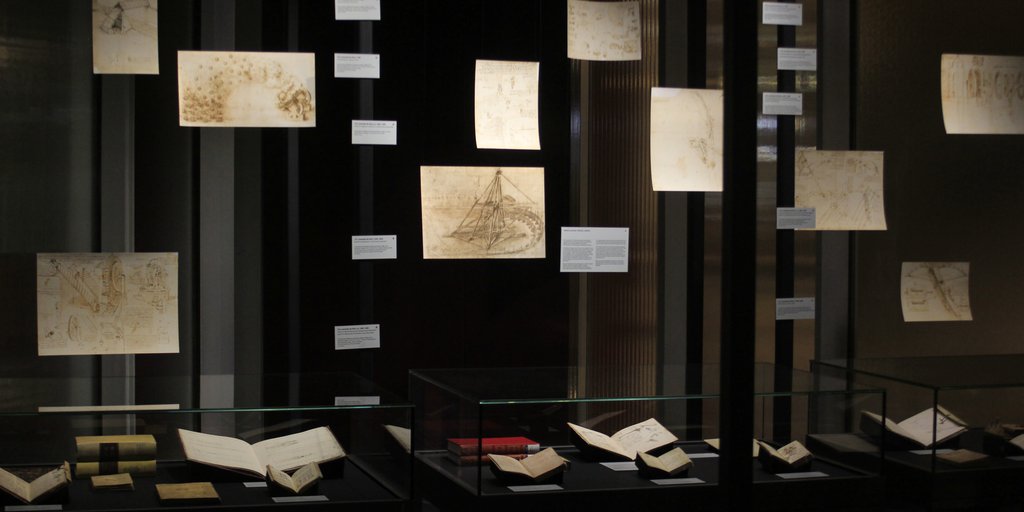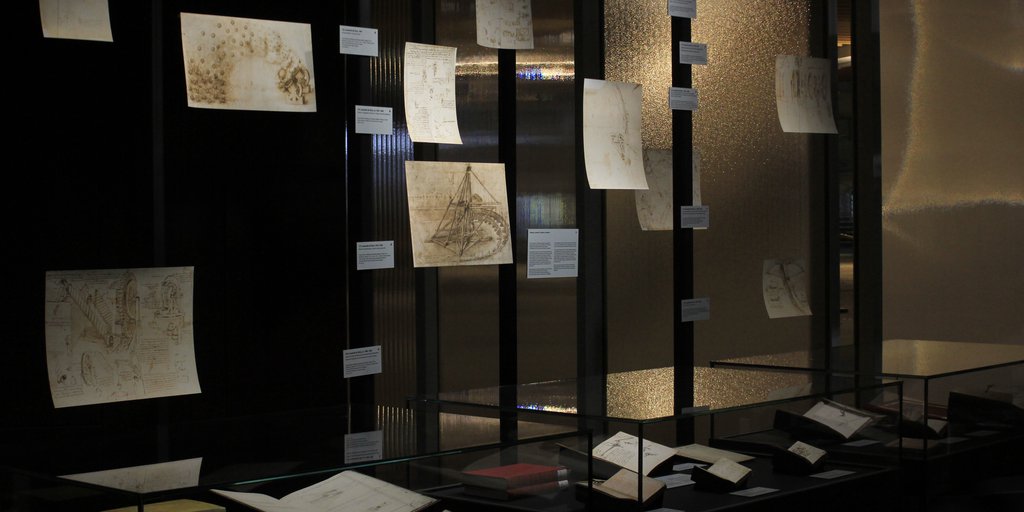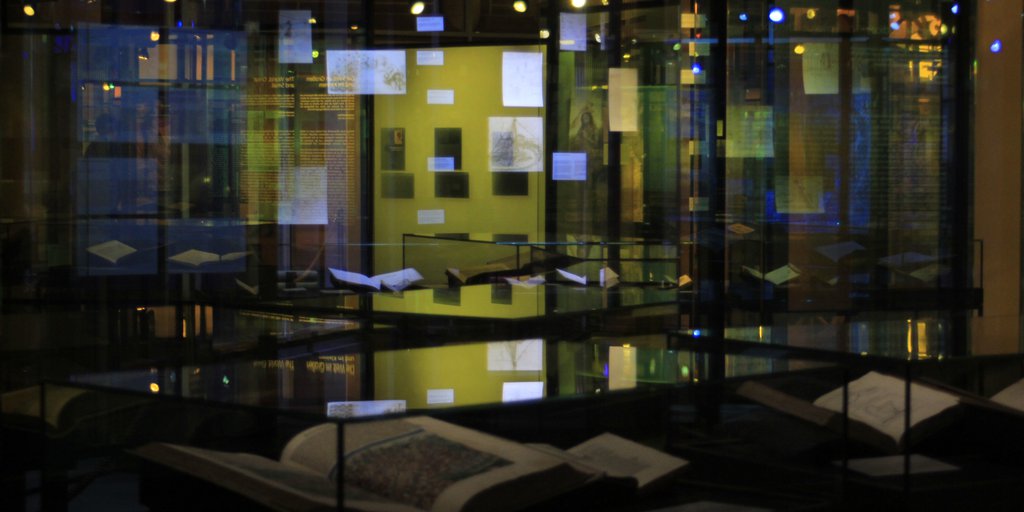
Epilogue: The Codices <
This is a collection without order, compiled from many papers that I have copied here,
hoping to put them in their respective order, according to the subjects they address …
Leonardo da Vinci
Codex Arundel, fol. 1r. Translation: Elizabeth Hughes
Leonardo’s surviving literary estate comprises over 4,000 sheets; a total of 22 volumes of illustrated manuscripts, generally known as codices, still exists today. The material is extremely heterogenous. Alongside pocket-sized sketchbooks with jottings made on the spot purely for his own use, there are large-format clean copies that seem to address an audience. What the volumes have in common is their thematic diversity, and all show traces of continual use and revision. At his death, Leonardo left the volumes to his collaborator and heir Francesco Melzi (1491/92–1567). Melzi’s heirs sold a large part of this legacy to the sculptor Pompeo Leoni (ca. 1533–1608). In 1637 the collector Galeazzo Arconati (before 1592–1649) donated several of these manuscripts to the Biblioteca Ambrosiana in Milan. They ultimately reached Paris as part of Napoleon’s spoils of war where most of them are still kept today—fortunately mostly in their original binding. Other codices took entirely different paths—though under similarly dramatic circumstances.
Codices <
 | 115.
Locomotor system 1506–1509 |

Leonardo understood the body as a microcosm, a world in miniature (90 ■). In the center of this page are the hips and hind legs of the skeleton of a horse, the very animal that Leonardo had recurrently studied for artistic purposes. The human locomotor system, shown in a nearly identical section and similar stance on the left, yields information by comparing the two systems. Leonardo wrote a note to remind himself to ascertain the differences between humans and horses and all the other animals, and to do this systematically, first for the bones, then for the different muscles and sinews. An unconnected note at the upper edge of the page mentions, as so often, a promising book: At Messer Vincenzo Aliprandi’s there was a copy of Vitruvius that had once belonged to the military engineer Giacomo Andrea.
References
Bambach, Carmen C. 2019a. Leonardo da Vinci Rediscovered. Vol. 2: The Maturing of a Genius 1485–1506. 4 vols. New Haven / London: Yale University Press, 487.
Idem. 2019b. Leonardo da Vinci Rediscovered. Vol. 3: The Late Years 1506–1519. 4 vols. New Haven / London: Yale University Press, 147, (145–160).











